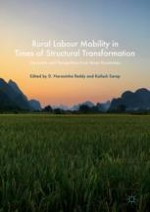2017 | OriginalPaper | Buchkapitel
2. Structural Transformation and Alternative Pathways to the Lewis Turning Point
verfasst von : Rizwanul Islam
Erschienen in: Rural Labour Mobility in Times of Structural Transformation
Verlag: Springer Singapore
Aktivieren Sie unsere intelligente Suche, um passende Fachinhalte oder Patente zu finden.
Wählen Sie Textabschnitte aus um mit Künstlicher Intelligenz passenden Patente zu finden. powered by
Markieren Sie Textabschnitte, um KI-gestützt weitere passende Inhalte zu finden. powered by
